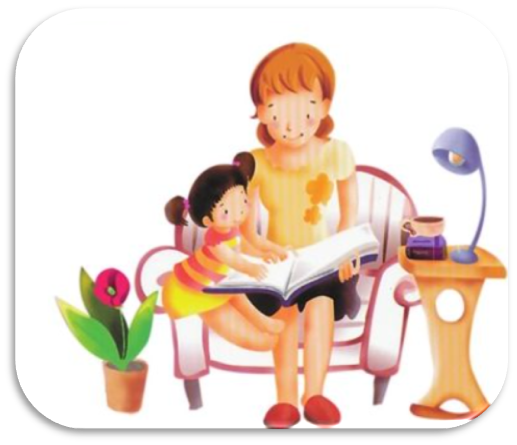Consciously cultivate basic Chinese reading and writing strategies for Singaporean children. Pre school children are still only beginners, and even if they have learned some words and are able to read independently, their understanding of the reading content is still very limited.
To become a fluent reader, parents also need to consciously help children develop basic reading strategies, in order to help children understand the reading content more comprehensively and deeply. There are four basic reading strategies: reflection strategy, expectation strategy, questioning strategy, and hypothesis strategy.

Reflection strategy:
It refers to children’s various reflections on the characters, plot, and other aspects of the story told in the picture book during the process of listening to the story or reading the picture book.
This reflection may be a manifestation of their own imagination or a reflection combined with their own life experiences. Regardless of the form, it will be beneficial for children to understand the reading content.
Expected strategy:
It refers to the ability of children, after accumulating a considerable amount of reading experience, to see or hear similar stories and speculate about the plot development and future behavior of characters.
This predictive ability can help children quickly understand the reading content and enhance their interest in reading in the future. With expectations, one wants to continue reading to verify whether their expectations are correct. At this point, expectations become a driving force and guide for continued reading, allowing children to engage in deeper reading comprehension.
Questioning strategy:
It refers to children’s questioning of the character setting, plot development, and story ending in picture books during reading comprehension. Why is this so? These doubts are related to the accumulation of children’s early reading experience, as well as their thinking about stories.
Queries help children find the reasons for events to occur and develop while reading, and are linked to their own reading or life experiences. They make children want to further explore and verify their doubts, and find answers.
Assumption strategy:
It refers to asking children to assume, after listening to a story or reading a picture book, that if they were in a different scene, the characters would behave differently, and if they were a certain character, what direction the story would develop and what different endings it would have.
Assuming that the strategy is an open-ended way of thinking, with no standard answers but various possibilities hidden. Children need to unleash their imagination and integrate, compare, and create their own life and reading experiences.
These four basic reading strategies can all be used in parent-child reading, where parents consciously use collaborative and interactive reading methods to help their children learn and apply them.
The use of different reading strategies can improve the efficiency and quality of children’s information acquisition through reading, and the use of basic reading strategies can also determine the level of children’s reading ability and how far they are from becoming mature independent readers.
The reading guidance ability of parents plays an external promoting role in the development of basic Chinese reading and writing strategies for Singaporean children.
To cultivate children as autonomous readers, it is also necessary to develop their internal strength. This cannot be achieved without the support of parents who have the ability to assist, and this assistance and support can be obtained from the following:

Creating a supportive reading environment for children=creating a physical environment+creating a psychological environment
Parents create their own comfortable reading corners for their children, allowing them to easily access picture books that they can read and enjoy at home. There are also plenty of picture books at home for children to choose from, which are all physical environments that parents can create for their children to stimulate their interest in reading.
To create psychological comfort and pleasure for children in reading, it is also necessary to create a psychological environment.
Reading with parents and children, enjoying the intimate time of snuggling together while reading, experiencing various fun of role-playing and game interaction in reading, feeling the warmth of parents’ love and the nourishment of language, all of which provide a safe and comfortable psychological environment for children’s reading.
The key word for creating a psychological environment is companionship: immersing oneself in the beautiful time of reading with children together requires parents to pay attention to their children’s emotional state and reading feedback during parent-child reading, adjust their reading interaction methods in a timely manner.
Engaging in discussions and exchanges with children during the reading process, encouraging and supporting children to express their opinions and ideas, and making children the leader in reading, Only in this way can children develop reading habits and improve their reading abilities.
Pay attention to the child’s state and ability development during reading, engage in dialogue and discussion.
To make children fall in love with reading, parents need to constantly monitor their children’s reactions during parent-child reading. Children’s level of understanding of the story can be judged by their expressions, body movements, etc.
Whether they are interested in this picture book story, and whether they are interested in reading at this time. If they are not interested at this time, do not force them to continue reading. This can easily lead to a sense of boredom in reading, and it is important to always connect reading with a sense of happiness.
Parents not only need to pay attention to their children’s reading status, but also need to pay attention to whether their children are willing to obtain key information in pictures by reading text.
Even if preschool children pay little attention to text in their reading, parents always tend to use pictures to communicate with their children. However, parents still need to realize that picture books are composed of both pictures and text. Picture books are not just a simple combination of pictures and text, but rather promote and integrate each other to tell a story.
Sometimes pictures and words describe two different things, and sometimes pictures and words complement each other in describing the same thing. Regardless of the way, the role of words cannot be ignored.
So when telling a story to a child, one cannot only interpret the picture and ignore the text, nor can one directly read the text and ignore the content that is not described in the text displayed in the picture.
To help cultivate basic Chinese reading and writing strategies for Singaporean children, it is necessary to enable them to grasp the key information in picture books during reading.
This is the information that can best help children understand the entire story content. In terms of understanding the meaning of the story, words often play a spiritual role, containing more crucial information in picture books.
Therefore, when parent-child reading, parents should consciously guide children to pay attention to the connection between pictures and words.
